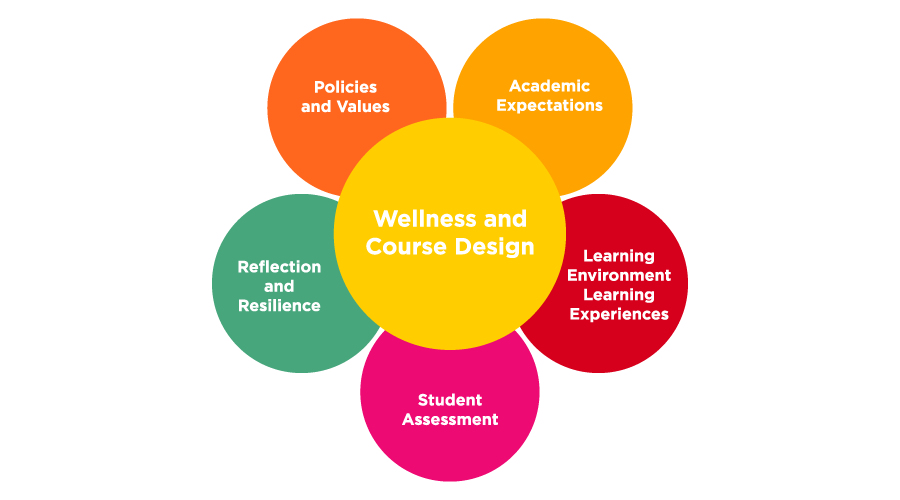Promoting Reflection and Resilience Through Course Design
Promoting reflection and resilience in a course is one way to help students change the narrative and their perceptions of themselves as learners and as human beings. But how?
Haboun Bair and Dr. Patti Dyjur, PhD, Taylor Institute of Teaching and Learning
October 22, 2018
Have you ever watched an orchestra and questioned if the conductor was really necessary? At the time of the performance, it seems that the musicians know what they are doing and can keep time themselves; it appears as if they do not focus any attention on the conductor at all. But if our focus changes to see all the pieces leading up to the performance, we can see a bunch of people with different ideas, skills, styles and instruments simultaneously interpreting a full score written by one or more composers. Sound familiar?
A common goal for students is to have the ability to conduct their own learning. However, stress and difficult challenges can influence the scores they write for themselves along the way, potentially affecting their progress. Imagine carrying a sheet of music to class that plays the same self-deprecating song across your entire program: how might that affect a student’s mental health and wellness?
We propose a model in which mental health and wellness are central aspects of course design for both students and instructors. Unlike a step-by-step course design model, this one is more holistic, with five categories of decisions to be made when planning the course structure: 1) policies and values 2) academic expectations 3) learning environment and learning experiences 4) student assessment 5) reflection and resilience (Dyjur et al., 2017).
We assert that many course design decisions can have a positive or negative impact on mental wellness for both students and instructors. In this blog post, we focus on reflection and resilience.

Student Reflection and Resilience
Promoting reflection and resilience in a course is one way to help students change the narrative and their perceptions of themselves as learners and as human beings. But how? The following two strategies are examples that can be used in courses to promote reflection and resilience in students.
1. Post/Pre Self-Evaluation
In contrast to pre/post self-evaluation, incorporate an activity in which students evaluate what they know about a topic in the middle of the course (as compared to how much they knew in the beginning). You can repeat the activity at the end of the course. This prompts students to think about how far they have come in terms of their learning. This will provide a realistic snapshot of their knowledge and skills, prompting them to think about areas of strength and growth.
2. Learning Logs
Students can begin reflecting on their key learning by keeping logs. This act of reflection can help increase their self-awareness and backtrack their thinking, and capture big ideas presented in class. These logs also help them express what was clear to them by encouraging them to jot down key concepts and theories. At the same time, students will want to use their learning logs to address misconceptions or identify what they could study further.
Instructor Reflection and Resilience
Instructor reflection and resilience is important too. As a faculty member, do you reflect on student evaluations or ignore them? If your article has been rejected by a journal, how do you handle it? While it is tempting to hit the delete button and forget about it, reflection can contribute to a growth mindset, while resilience will help you shake off the negativity. We offer the following suggestions as possible starting points to build reflection and resilience:
1. Critical Friend
Buddy up with another instructor to be each other’s critical friends (Costa & Kallick, 1993). Rather than read your own end-of-course evaluations, exchange evaluations with your critical friend and read them, thereby taking the sting out of biting comments. You can each summarize the salient points into four broad themes:
-
What worked well?
-
What didn’t?
-
Suggestions for improvement
-
Glowing testimonials (because we can all use a boost from time to time)
2. Course Journal
While teaching the course, make notes on what is working well and what could work better from your perspective. You don’t have to make notes after every single class, but it is worthwhile to jot down a few thoughts while they are fresh in your mind. It can be challenging to remember these details the next time you teach the course. Some questions to prompt your thinking are:
-
What learning activities did we do in this class and how did it go? What could have gone better?
-
What concepts or topics were particularly tricky? Where did students excel?
-
How was my well-being this week? Were there any issues with workload, such as marking and feedback?
Promoting reflection and resilience in your course design can create opportunities to anticipate areas that students may find overwhelming in their learning. While course design decisions cannot completely erase stressors in higher education, they can contribute in small ways to student and instructor wellness.
Related content
Four Practices to Boost Your Resiliency
Course Design Program Manual
References
Berkeley Center for Teaching & Learning. (2018). Sample midterm evaluations. Retrieved from https://teaching.berkeley.edu/sites/default/files/sample_midterm_evals.pdf
Costa, A. L., & Kallick, B. (1993). Through the lens of a critical friend. Educational Leadership, 51(2), 49-51.
Dyjur, P., Lindstrom, G., Arguera, N., & Bair, H. (2017). Using mental health and wellness as a framework for course design. Papers on Postsecondary Learning and Teaching: Proceedings of the University of Calgary Conference on Learning and Teaching, 2, 1-9. Retrieved from https://journalhosting.ucalgary.ca/index.php/pplt/article/view/42227
